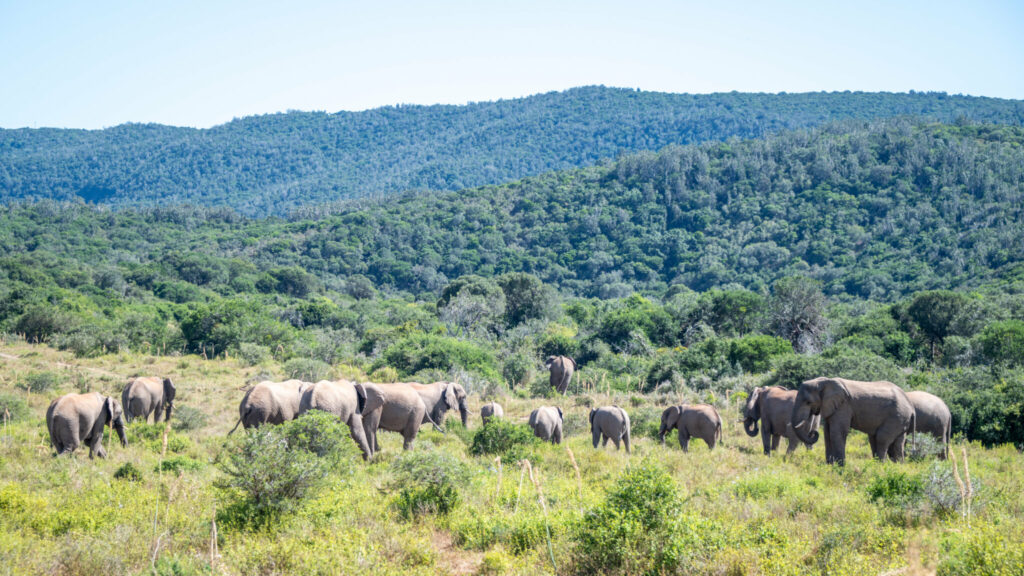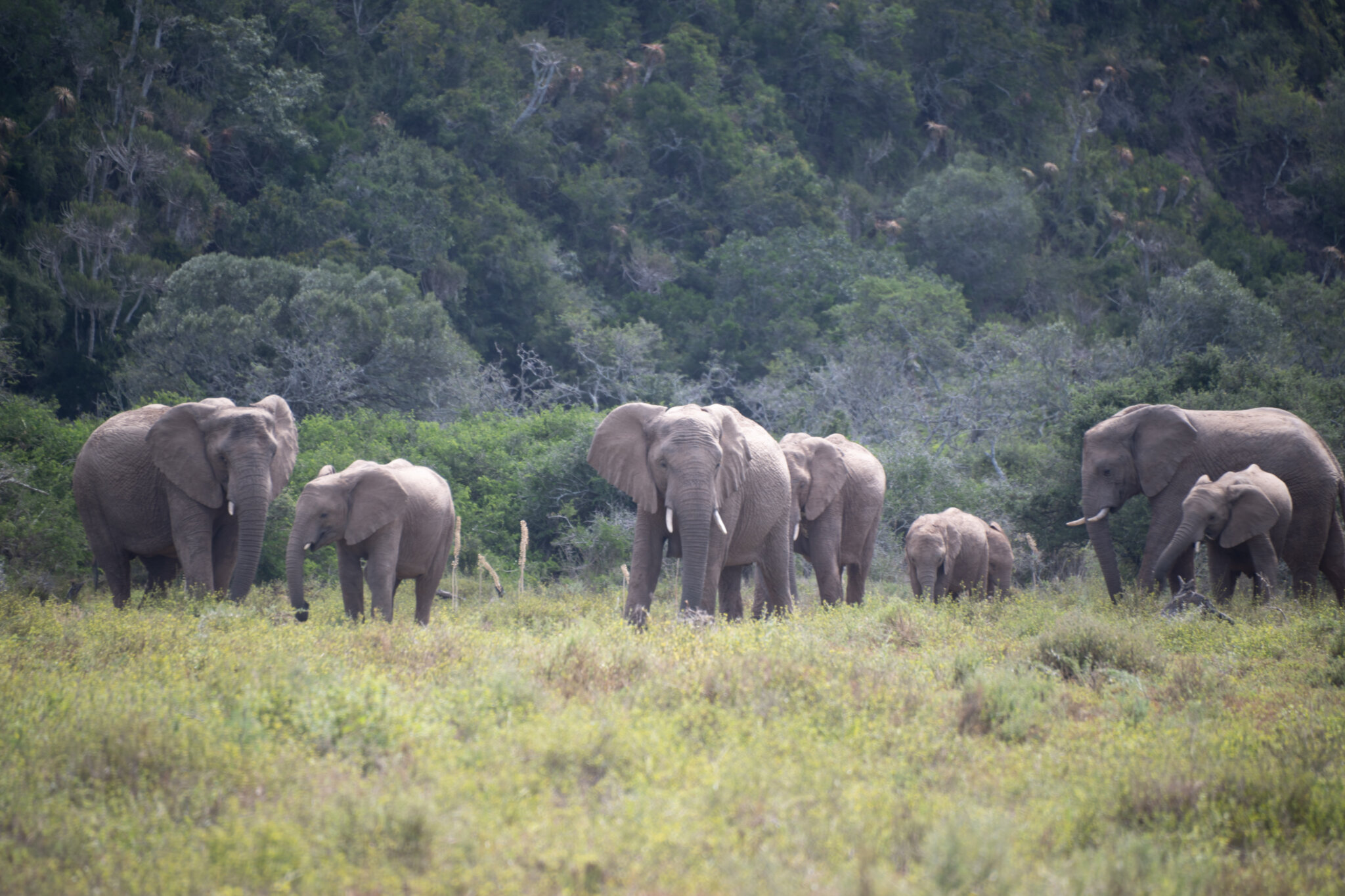Big news at Kariega Game Reserve! In December of 2023, in association with the Kariega Foundation’s habitat expansion project, BTEH supports the removal of one of the internal fences connecting the Kariega West and Harvestvale areas of the park. A key mission of the project is to give herds on opposite sides of the fence (and river) access to a broader habitat. I mean, who wouldn’t want a larger area in which to play and explore? One of BTEH research objectives is to see, in short, what happens when you remove fences and how that impacts herd behaviour and population health.
I’m reporting from the BTEH elephant research program at Kariega, March 2024. This is the first time BTEH researchers Brooke Friswold (PhD student) and Antoinette van de Water (PhD) have observed the different herds here post-fence removal. It’s an exciting time to be a part of this! [Aside: if you’ve always wondered how to get involved with elephants, are a little nerdy about research stuff, and think the idea of a safari seems a little too much like a canned experience, you’ve got to try this program! 😉]
Text and photos by Lesli Woodruff.
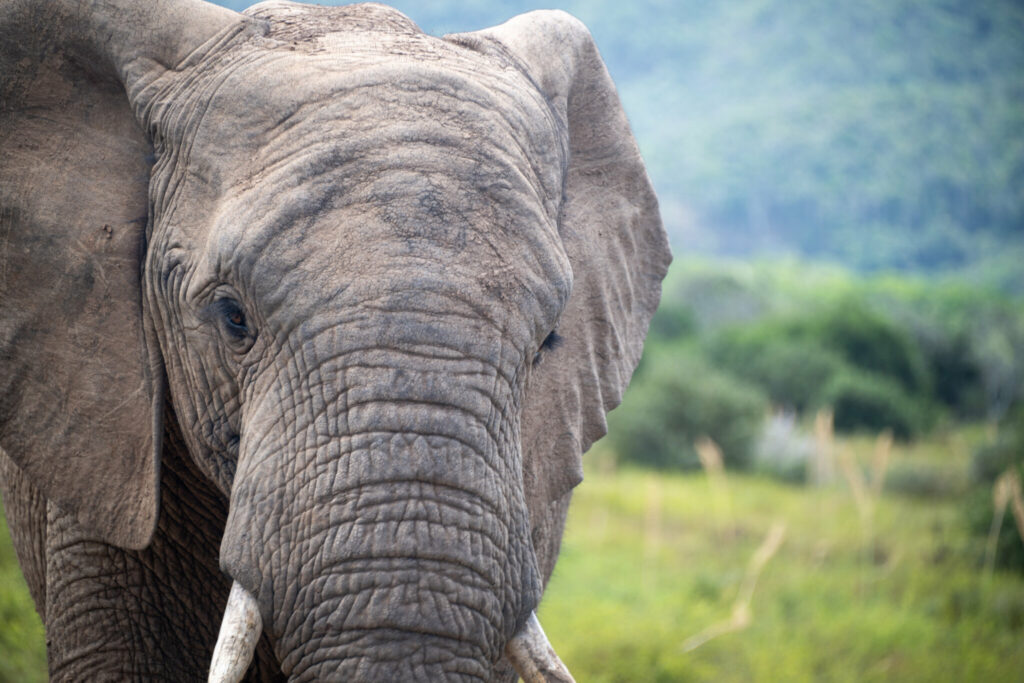
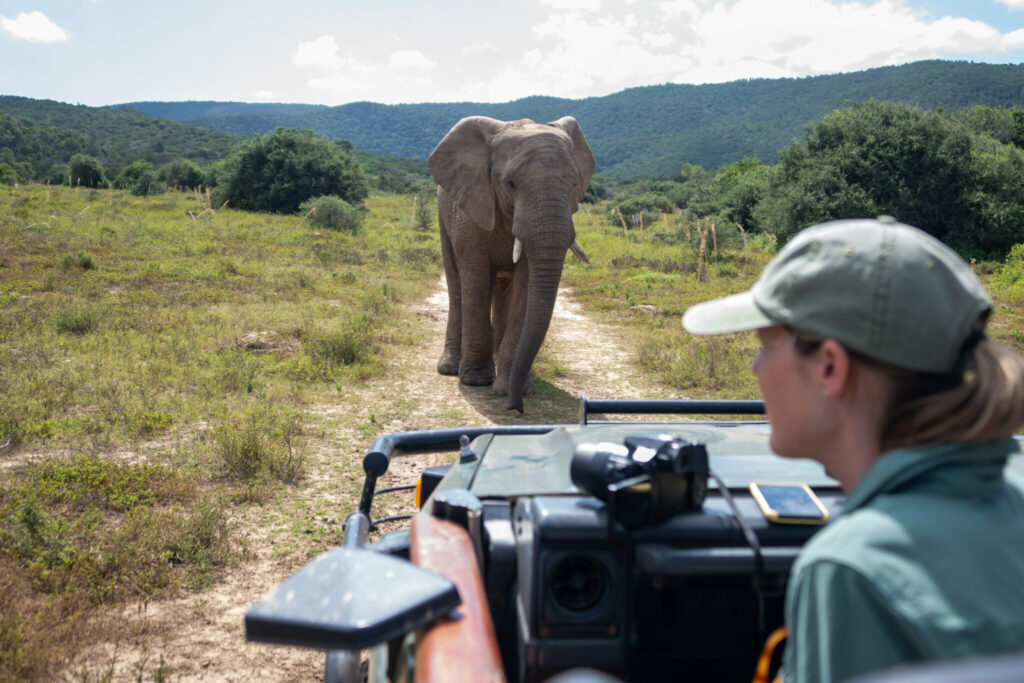
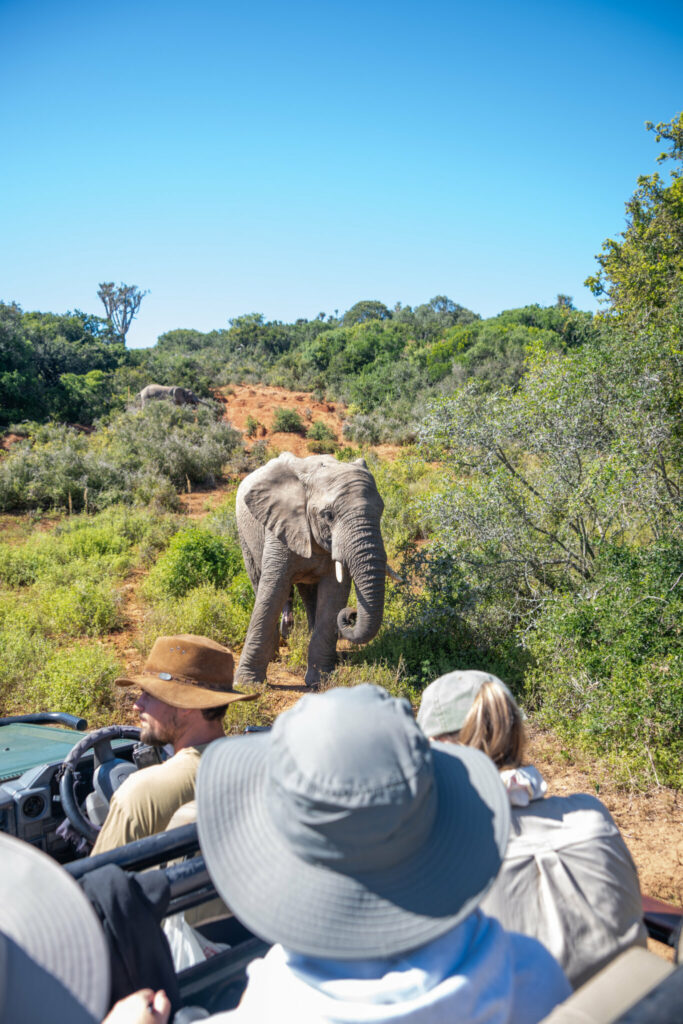



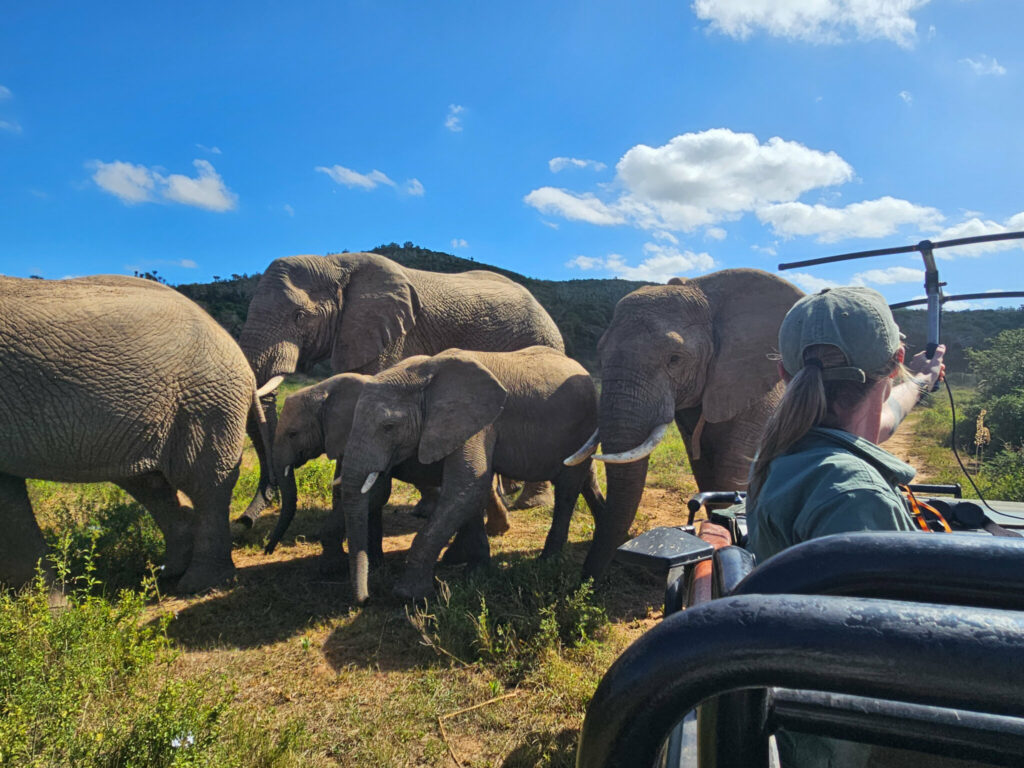
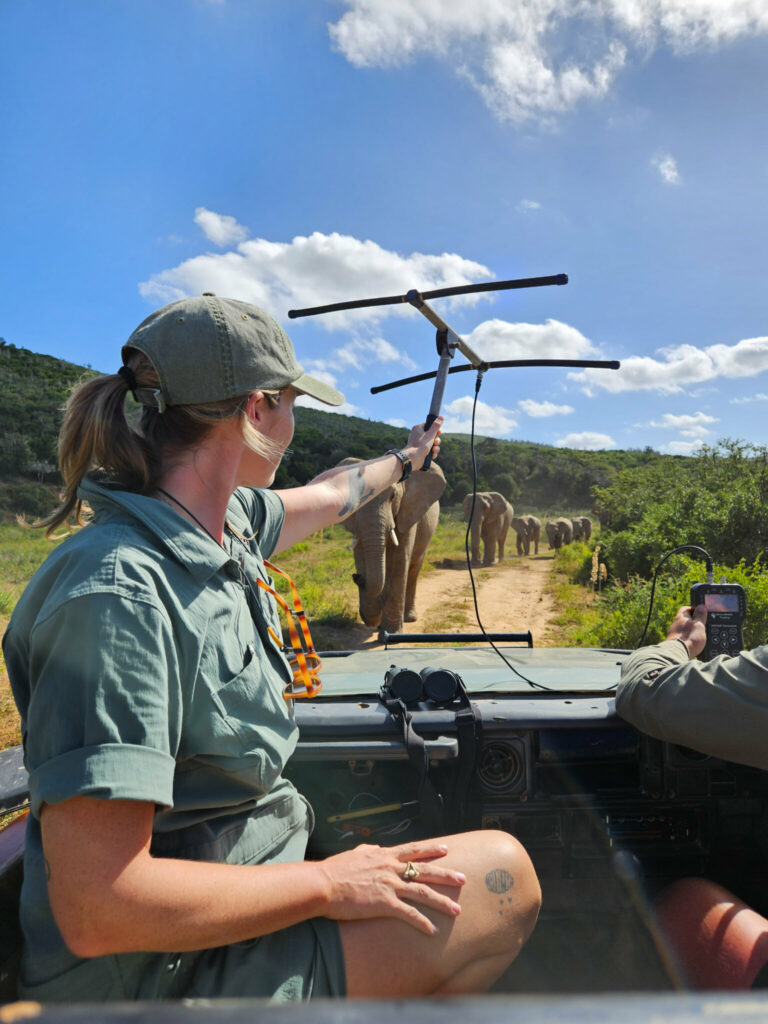
Here are 5 observations (expected and otherwise) after fence removal:
New places to explore!
Not surprisingly, we’re already seeing herds and individuals that were once confined to the Kariega West area exploring into the Harvestvale section, and vice-versa. Elephant location, movement and interaction are monitored via GIS (geographic information systems) tracking and low range radio collars which were fitted to 6 elephants of varying ages/sexes in August of 2022. Fitting collars is a complicated and costly operation, requiring veterinarians, helicopters and scientists (plus some luck), so it was devastating to learn that more than half of the collars have failed (full collaring report here) due to twisting and malfunction. The elephants are fine, but the science is impacted. Findings during our time here in March will assist with on-the-ground identification, behaviour tracking, and dung sampling (yep!).
You see Brooke tracking Beauty’s herd via a telemetry antenna contraption in the pictures above because a 4th of the 6 radio collars is malfunctioning.
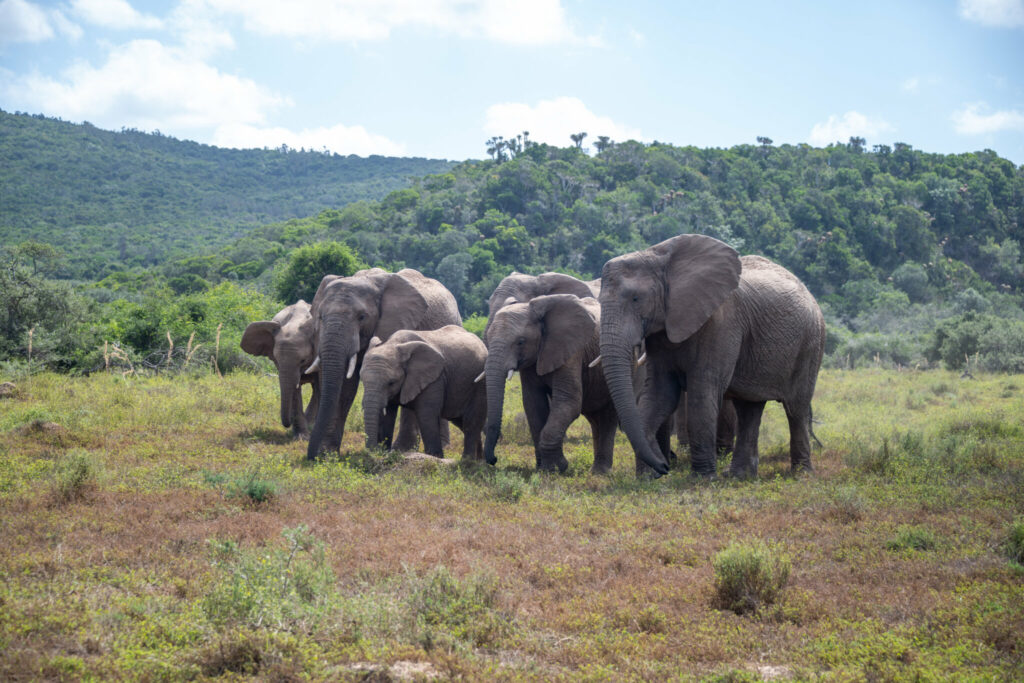
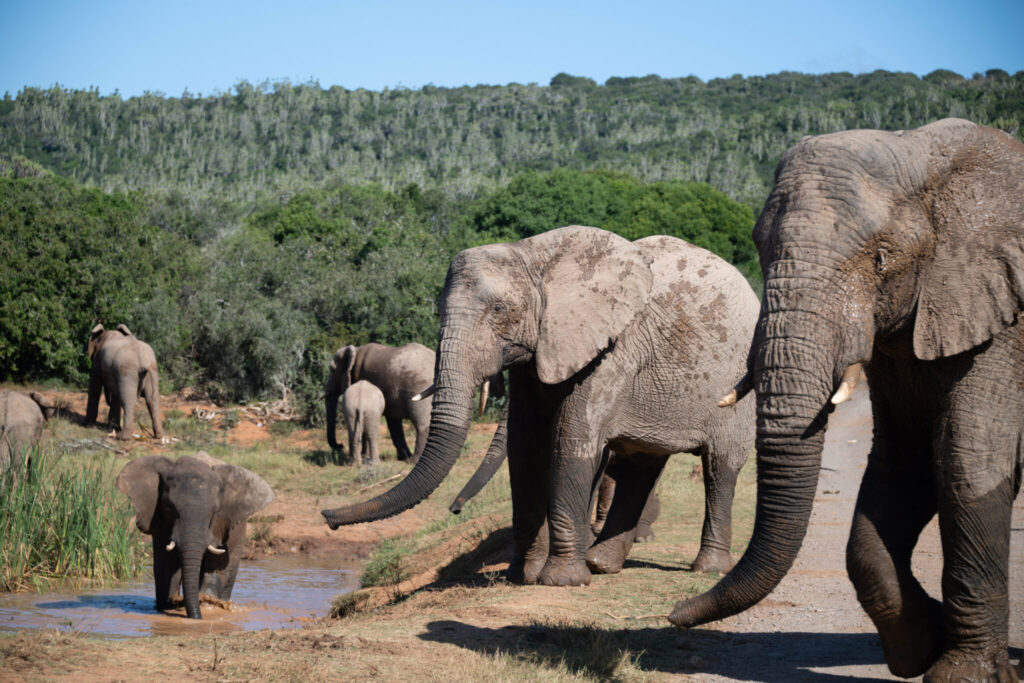
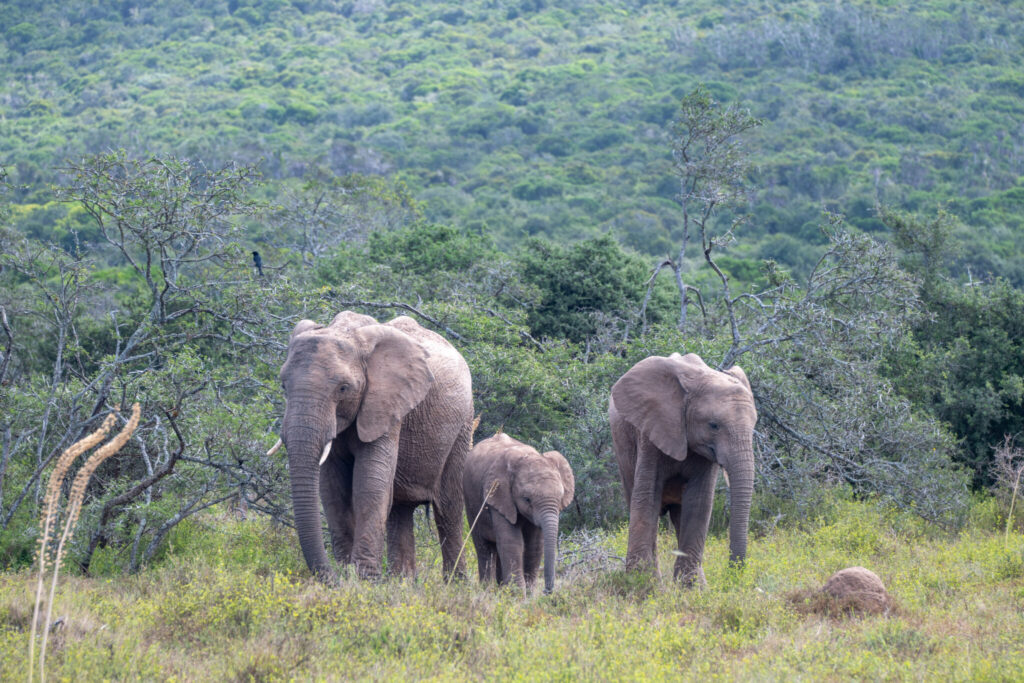
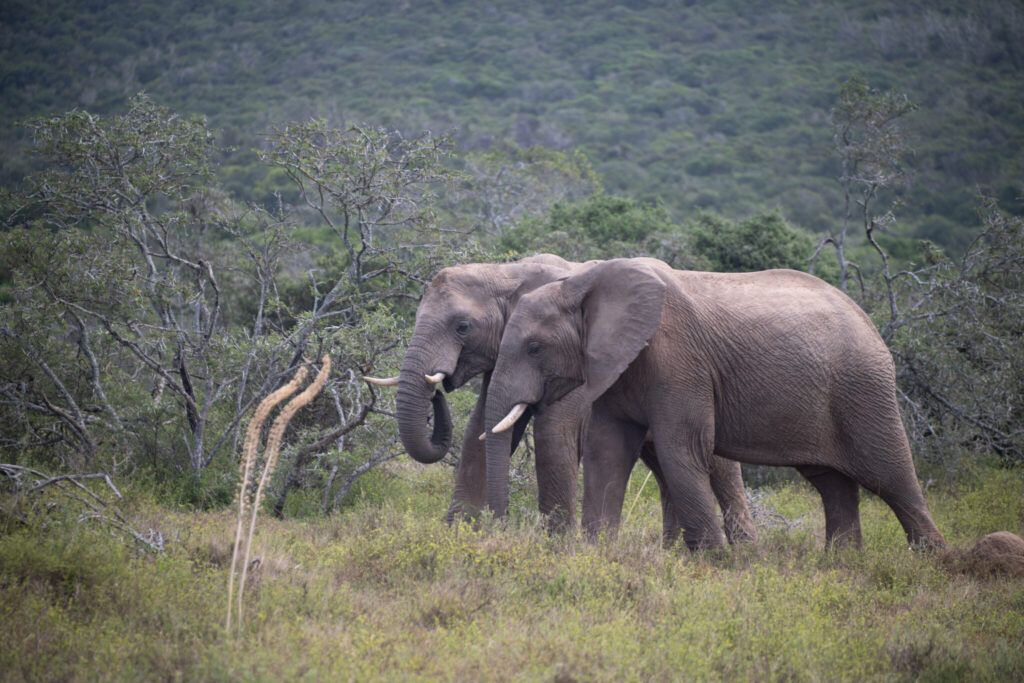
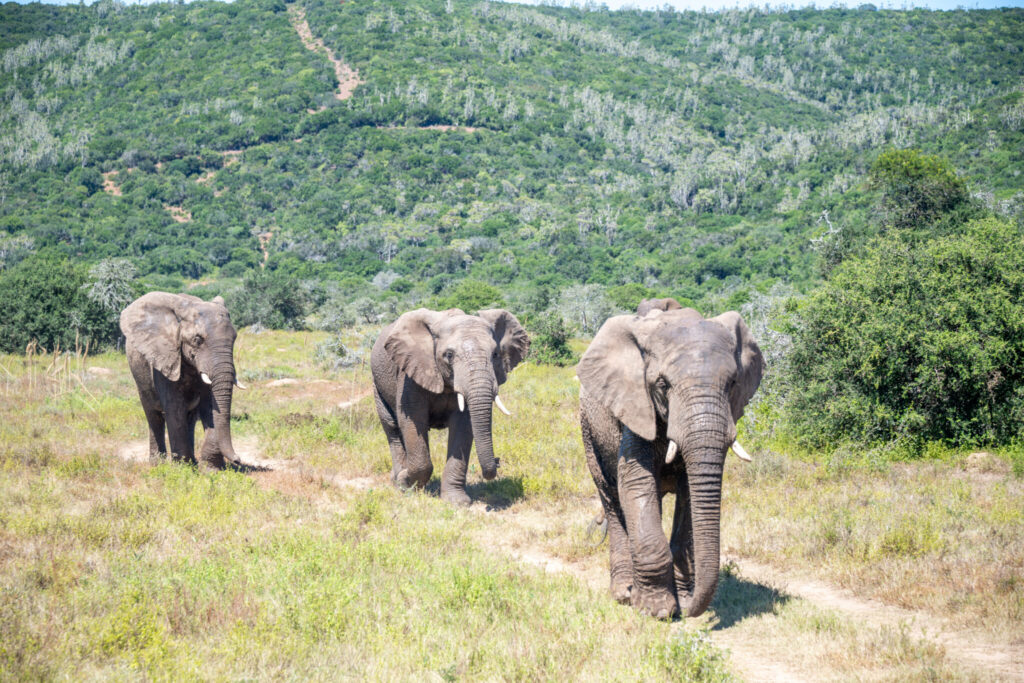

The bulls are a little, erm, randy.
Think of it like spring break: you put a bunch of single college guys in a new environment with a bunch of cute and possibly available chiquitas, what do you get? Well, scientifically, many of the males (bulls) have gone into musth, or a state of pre-musth (though per the science-y folks, this observation is still anecdotal but we found out this week that there are 3 (!!!) bulls in musth right now here at Kariega). In general musth is a stage of the mating cycle when adult or sub-adult bulls experience testosterone levels of 60 times greater than average. This makes them do weird and not-so-weird things like Following sub-adult females (cows), Touching genitals (their own and cows’), placing their “Trunk over back” of desirable cows, chasing zebras, walking around Sniffing the air, wandering far and wide, and generally getting excited for the “new meat” in the vicinity. We’ve observed and logged many of these behaviors in the Zoomonitor app, and we’ll see how this plays out (stay tuned to the BTEH updates page for details).
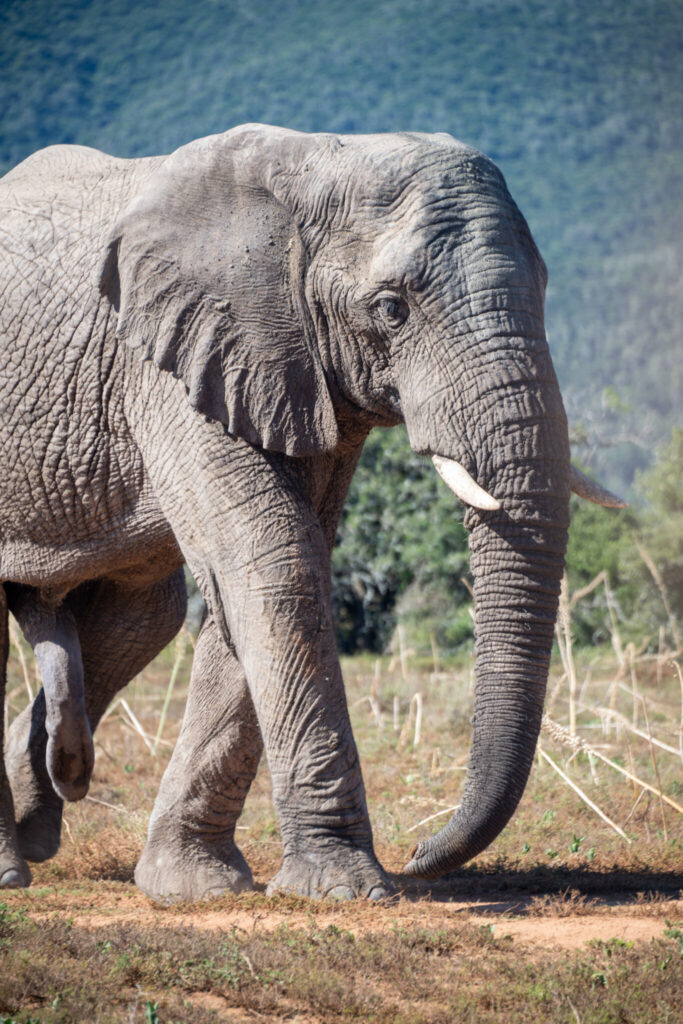
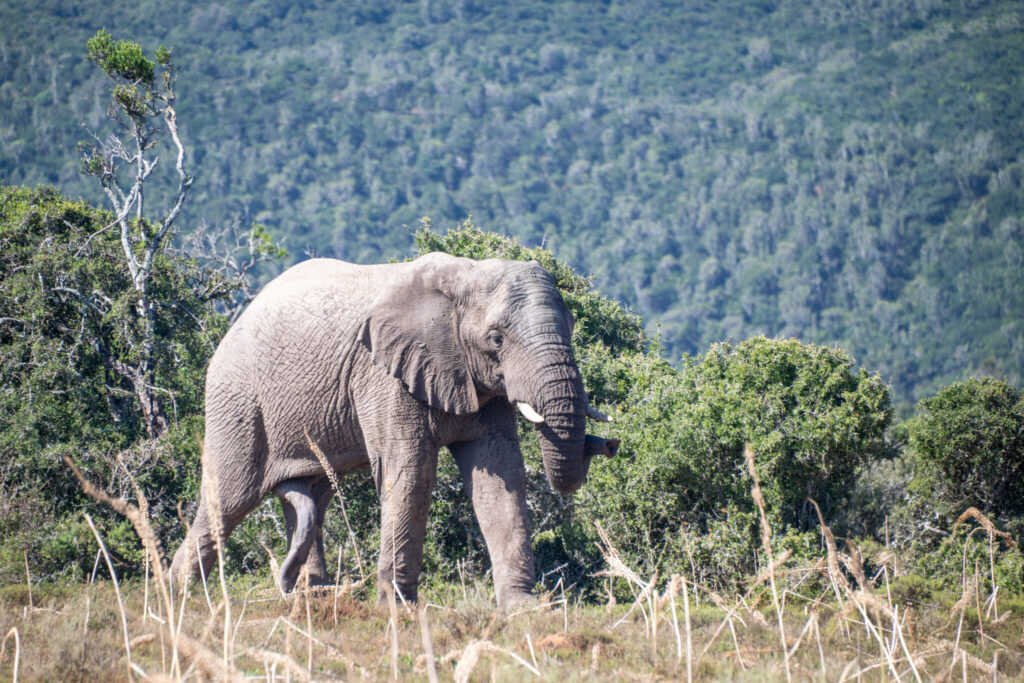

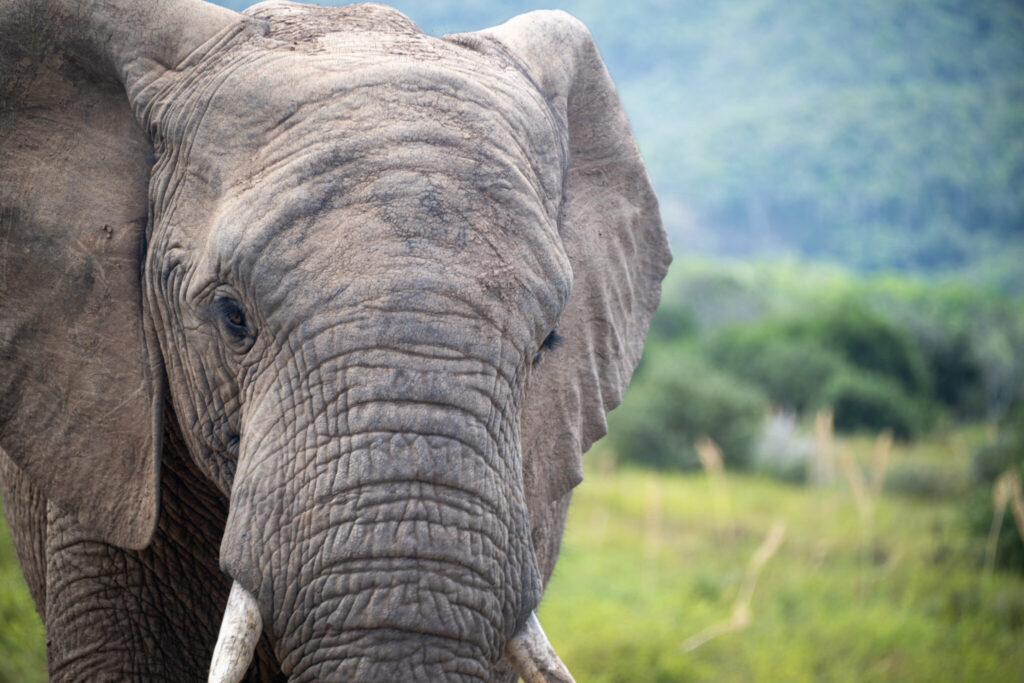
Amazing social excitement and interaction.
In our first days of observation here, we noticed some of the Kariega West and Harvestvale herds have meshed. Our first morning, we saw the Half Moon herd mix with Beauty’s herd. This of course throws off the ID database, which had neatly arranged individuals by herd by area, and means that our ID work this month will be crucial to not only identifying individual cows and bulls assimilating into different herds, but also tracking the potential new herds that may form as a result (see point 2). Per Antoinette, “It’s amazing to observe elephants that fully have the freedom to explore and interact and make new social connections. This is the best way to see elephants completely in their element.
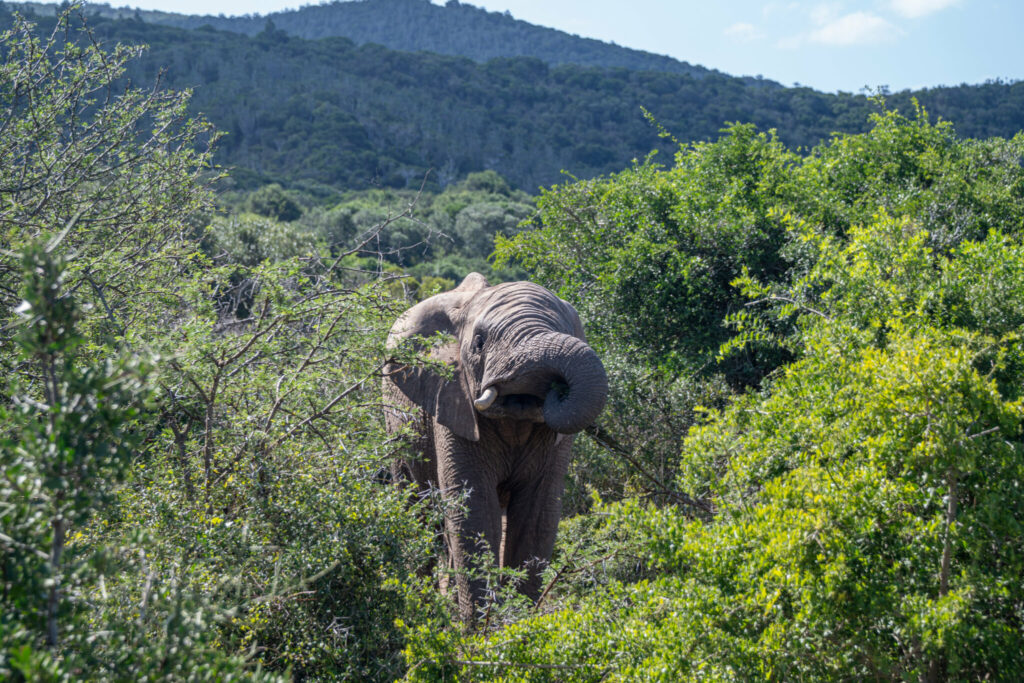
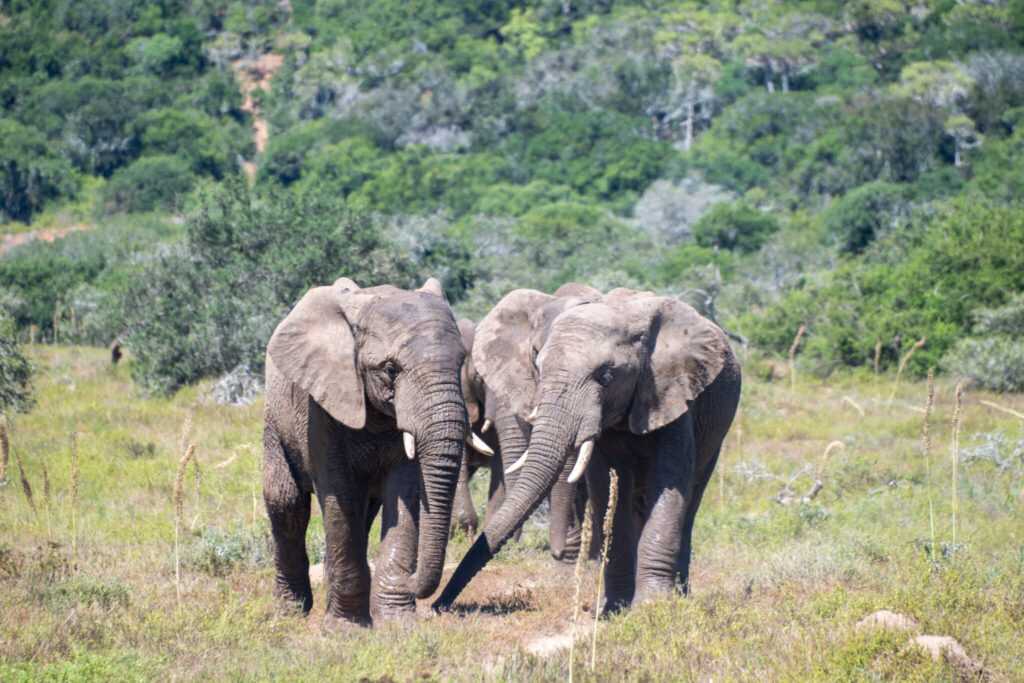
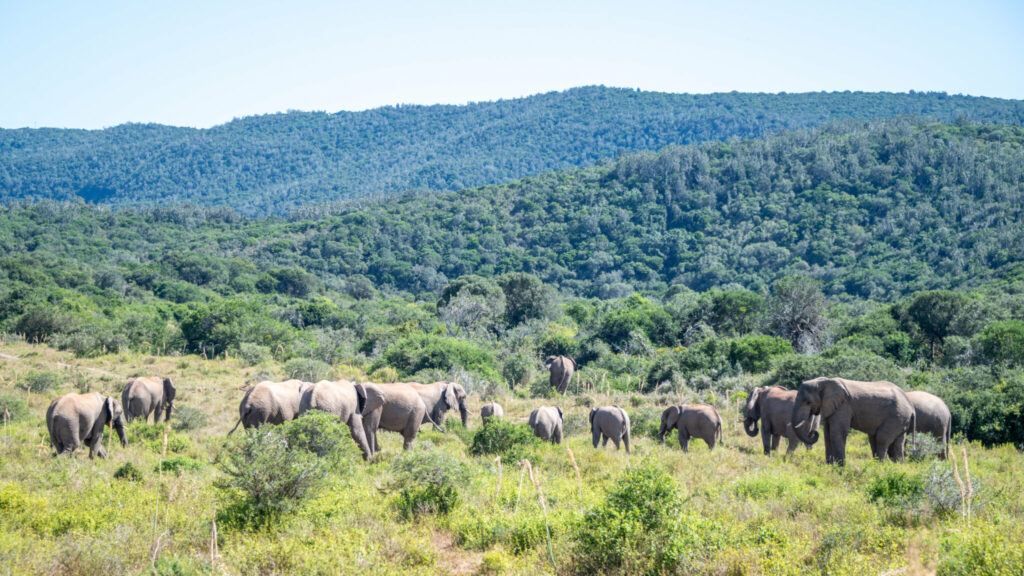
Some are travellers, some are not.
Kariega’s elephant population is roughly 75 individuals. Elephants are social and highly intelligent: emotionally and mentally. They are said to never forget, and can hold onto traumas just like people. Herds are traditionally led by an old and wise female (I began writing this post on International Women’s Day, so of course they are 😉) So with all the exploring and commingling some of the elephants are doing, one matriarch, Bukele has still not crossed the river from Kariega West to Harvestvale. Whether it is because the way to the other side is around or that the river is saltwater and thus creates a natural fence (elephants love to swim and bathe, but prefer freshwater), this remains to be seen. Camera traps, GIS tracking, and future research trips will help answer these questions…and more.
Happiness is contagious.
During our initial drives, we observed un-stressed, curious, social, and thriving elephants. As with humans, lack of stress reduces cortisol, which leads to overall better health and well-being. Additionally, seeing happy and healthy elephants put a smile on the face of everyone in our vehicle. Per Antoinette, “What we observed yesterday is like the best example of how range expansion contributes to animal well-being.” When elephants are happy, so are the people watching them. Want to learn more?

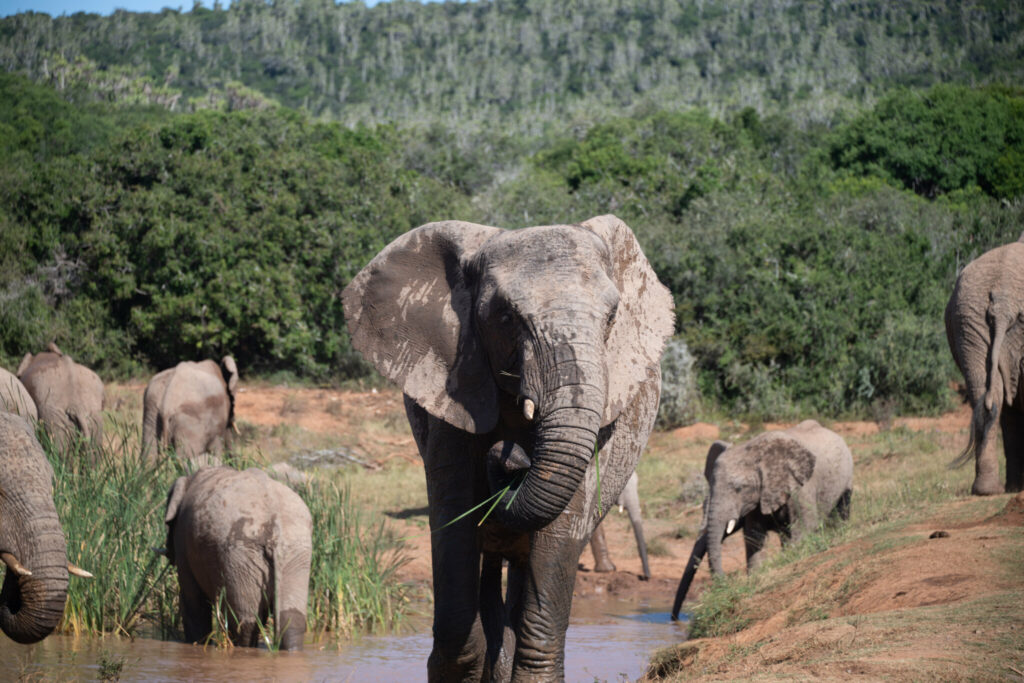
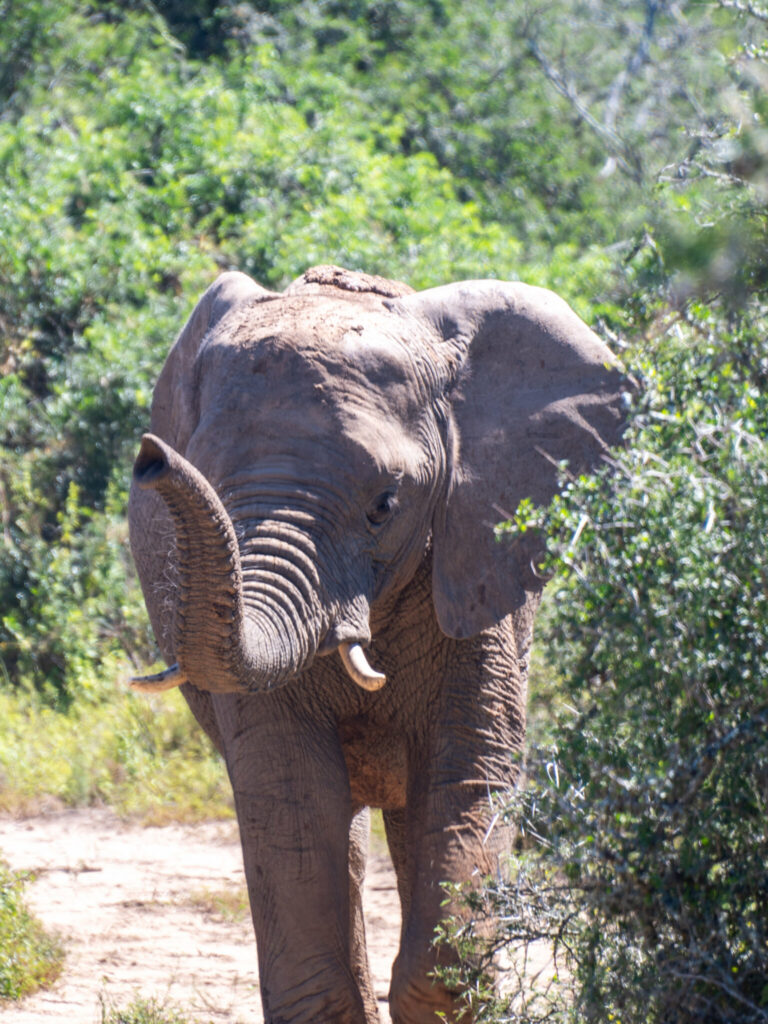
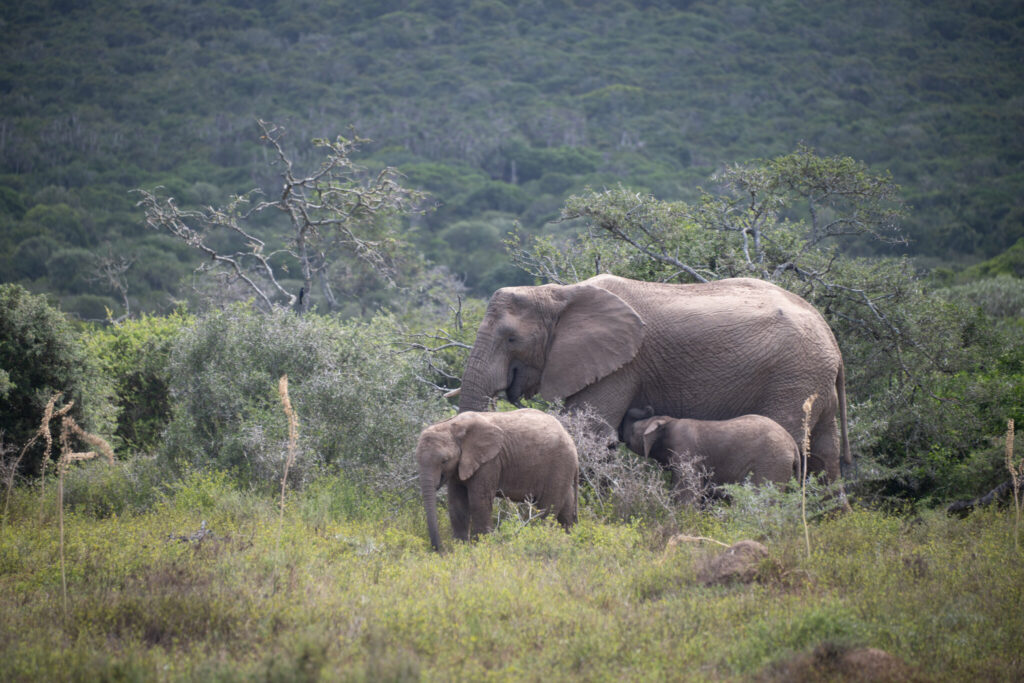
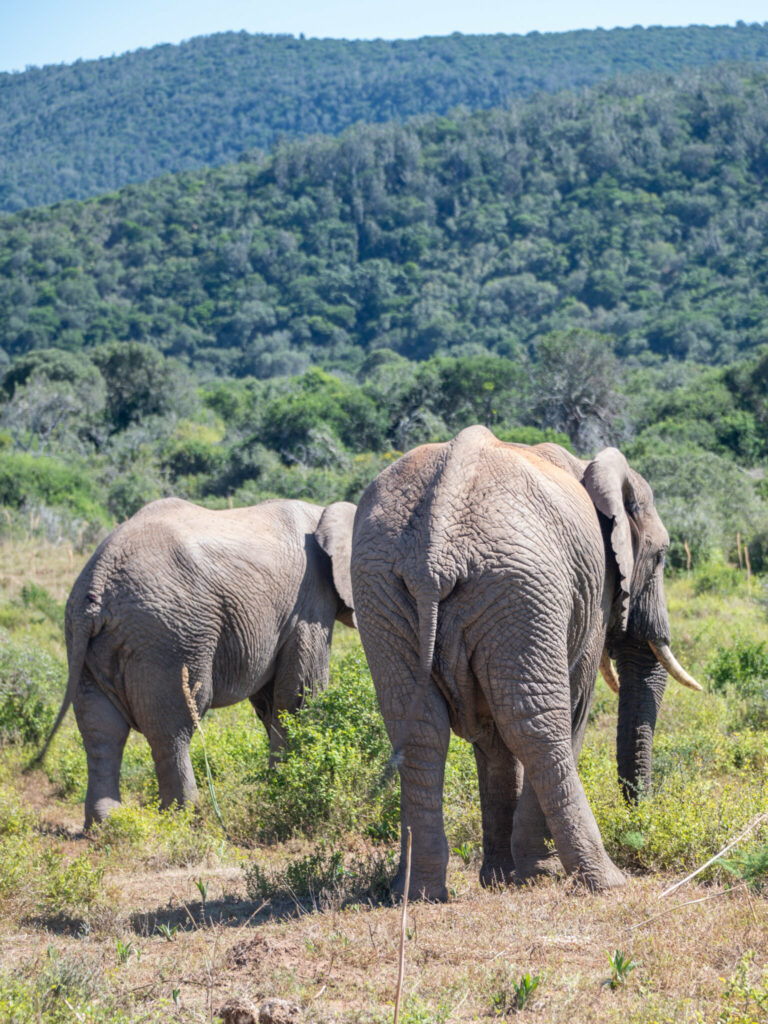
When I asked Brooke what her biggest surprise was, she commented that it is so exciting to see the different herds socialising and commingling like this. “It remains to be seen,” she said, “whether this is just exploratory because it’s new, if the new commingled herds and interactions will persist, or if they will go back to their original structures in time.”
Interested in getting involved (highly recommend!)? Go here. Now.
